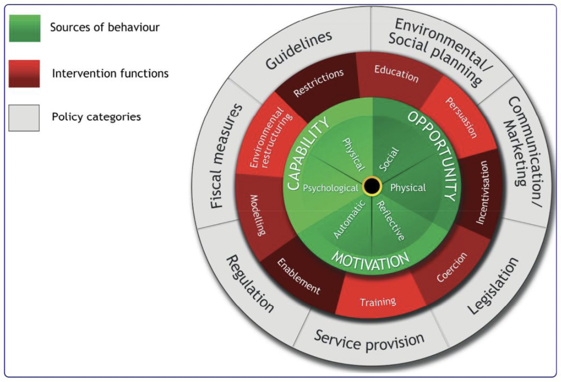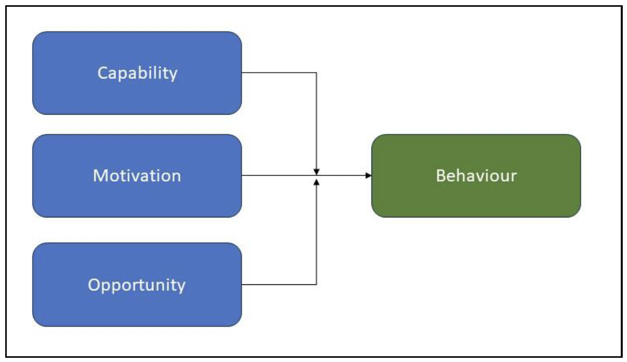Air quality: key behaviours report
Report commissioned to identify key public behaviours that have the most impact on improving air quality, and to support future public engagement work. The report focuses on the actions households and the general public can take to support improving outdoor air quality.
2 Approach
2.1 Review method
A rapid review of the available evidence was undertaken, using a pragmatic approach to identifying and synthesising relevant academic and grey literature within the time and budgetary constraints of the project. Given the broad nature of the research objectives and the anticipated availability of existing literature reviews on relevant topics such as transport mode choice (reducing the need for systematic evaluation of original studies), a traditional literature review approach was considered appropriate for the research. Elements of systematic review and Rapid Evidence Assessment methods have been incorporated where possible, such as reporting databases and organisational websites searched, standardising and reporting search terms used.
The review was undertaken in two phases:
· Phase 1: Broad search to identifying key behaviours and impacts
· Phase 2: Behaviour-specific searches to fill gaps on impacts and factors influencing the key behaviours.
Further details on the methods used in the literature review are provided in Appendix A.
2.2 COM-B as a framework for understanding air quality related behaviours
In discussion with Scottish Government policymakers, the COM-B (Capabilities, Opportunities, Motivations – Behaviour) model was selected to provide a basis for the analysis of public behaviours impacting on air quality. The COM-B model of behaviour forms part of a broader framework for analysing and designing behaviour change interventions – the Behaviour Change Wheel (Figure 1). The COM-B component forms the 'behaviour system' (Michie et al., 2011) at the centre of the Behaviour Change Wheel. It sets out the broad conditions that are necessary for behaviour change to occur, and therefore provides a useful framework to help inform directions for future public engagement on air quality.

The COM-B model frames factors enabling or constraining behaviour change in terms of the individual's Capability, Opportunity and Motivation to engage in the behaviour in question (Figure 2, with definitions in Table 1). All three components are necessary to facilitate behaviour. Motivation has a direct influence on behaviour, but the extent to which motivation actually leads to behaviour depends on the individual's capability and the opportunity afforded by their physical and social environment.
The COM-B model is just one of a multitude of conceptual models that can be used to understand and analyse behaviour. The advantages of using the COM-B for this research are:
a) It provides a high-level interdisciplinary framework, compatible with analysis of drivers and barriers of behaviour from across academic disciplines.
b) It broadly encompasses the relevant determinants of behaviour, some of which (particularly context and automatic processes) tend to be lacking or inadequately represented in other widely used behavioural models.
c) As part of a wider framework for behaviour change intervention, analysis of COM determinants of behaviour can lay the foundation for the development of interventions and policies using the Behaviour Change Wheel.
In this report we use the COM-B framework to categorise the factors that drive or constrain behaviours impacting on air quality. For each of the key behaviours, the relevant factors highlighted in the literature reviewed are outlined in a table, classified according to whether they relate to Capability, Opportunity or Motivation. The COM-B framework is being used in behaviour change research in several areas of the RESAS Strategic Research Programme, including in relation to waste and the circular economy, and outdoor recreation behaviour[5].

Table 1: Definitions of COM-B components (adapted from West & Michie, 2020)
Capability
Capability is an attribute of a person that together with opportunity makes a behaviour possible or facilitates it. Capability encompasses people's physical capabilities (e.g. physical abilities) and psychological capabilities (e.g. knowledge, memory).
Opportunity
Opportunity is an attribute of an environmental system that together with capability makes a behaviour possible or facilitates it. Opportunities can consist of physical opportunities (e.g. available infrastructure) and social opportunities (e.g. enabling social norms and social networks).
Motivation
Motivation relates to the mental processes that energise and direct behaviour. The Motivation component of the behaviour system encompasses reflective motivational processes (factors driving conscious intentions and planned behaviour) and automatic motivation (driven by emotions, habits or instincts).
Contact
Email: andrew.taylor2@gov.scot
There is a problem
Thanks for your feedback